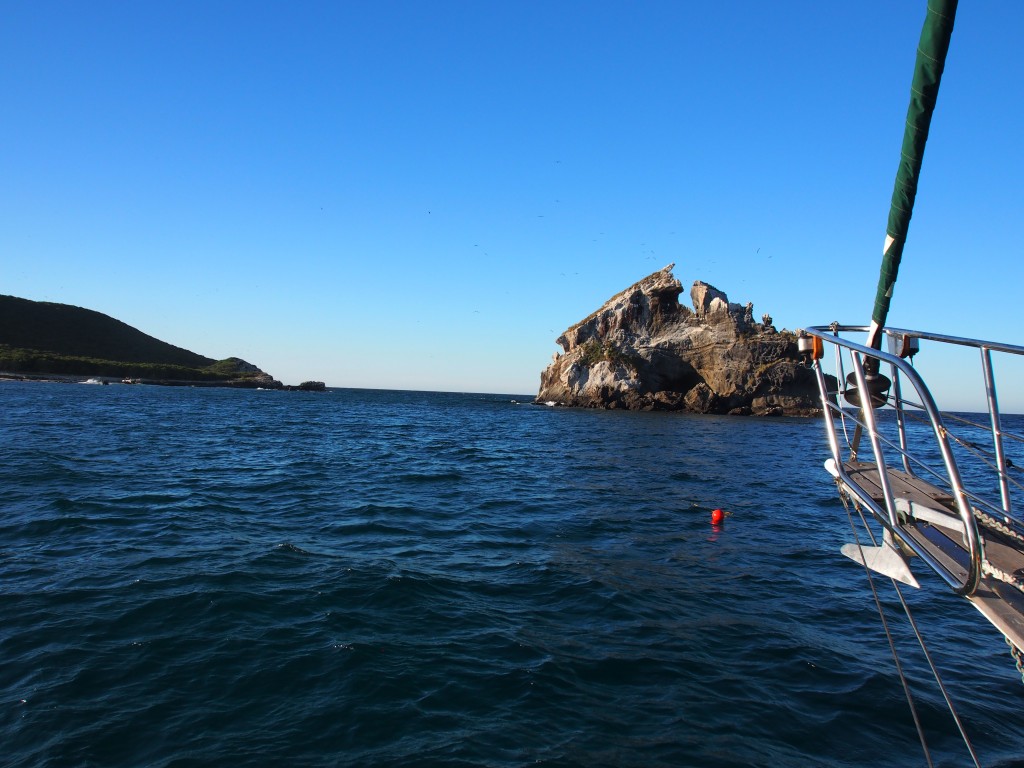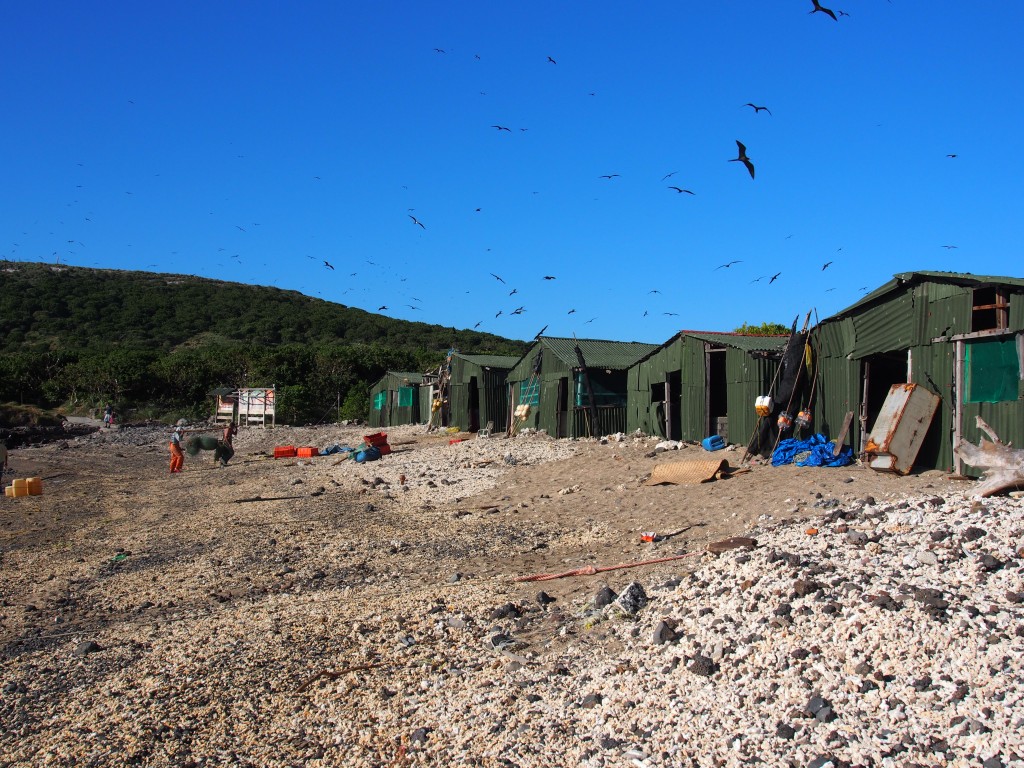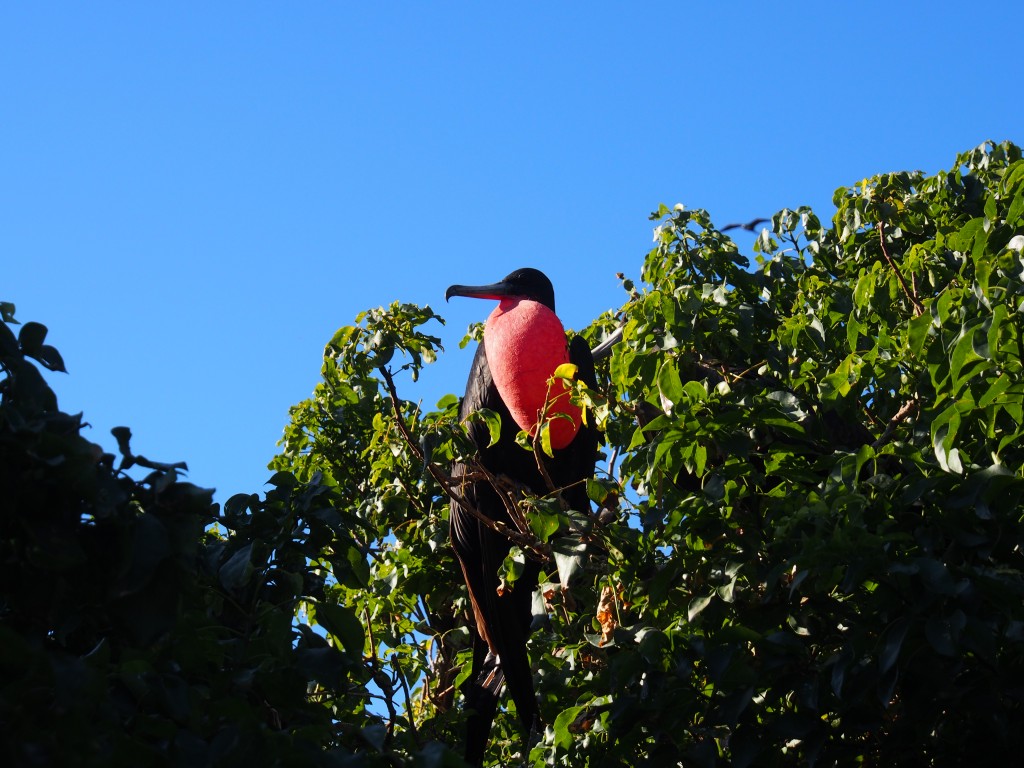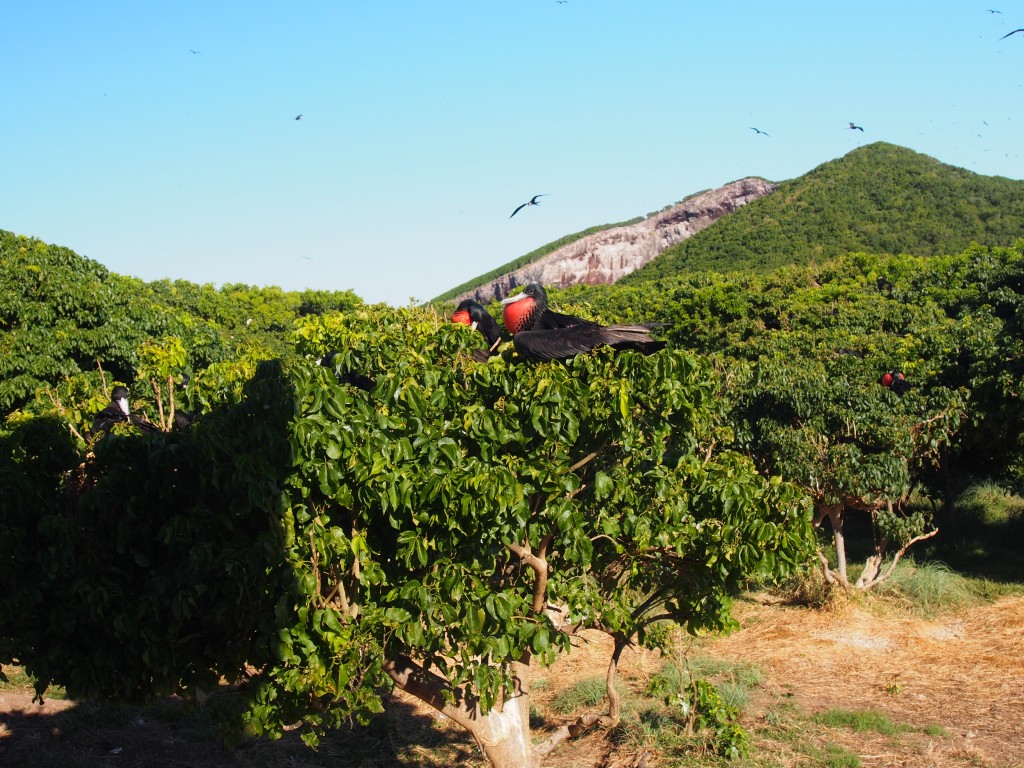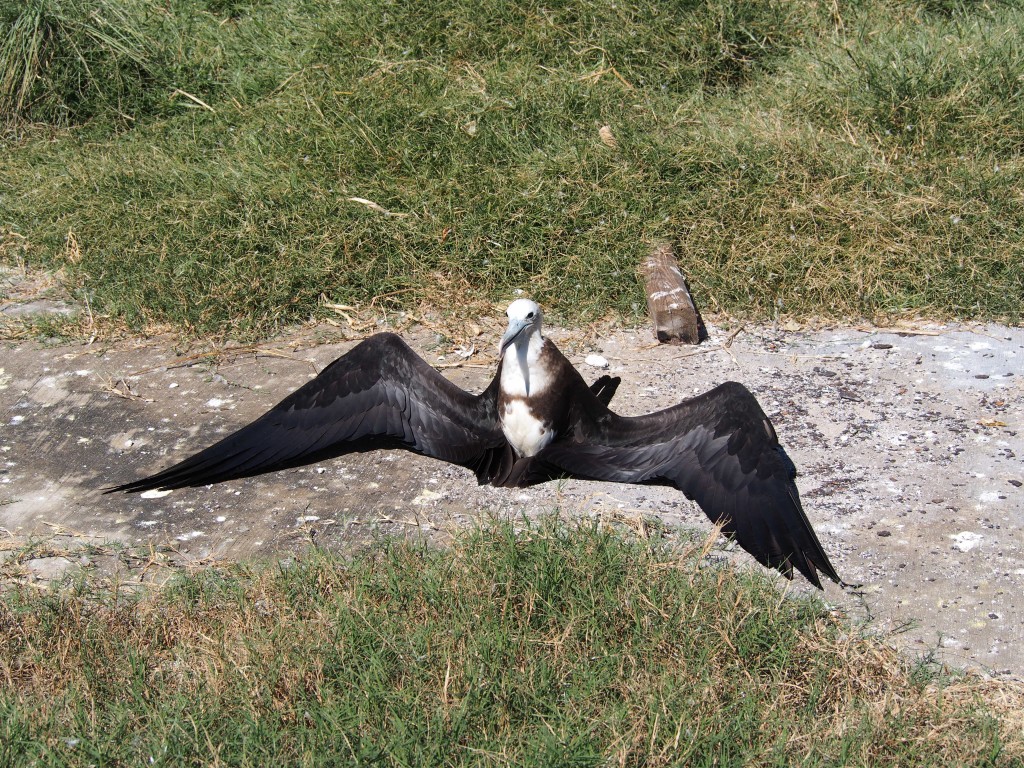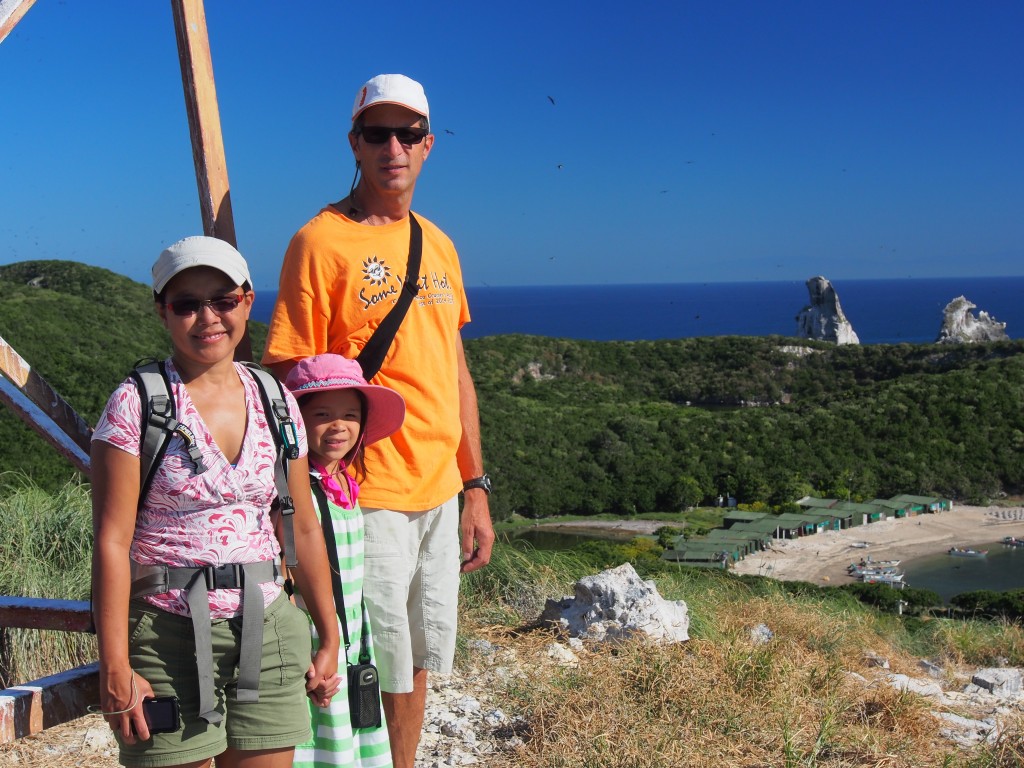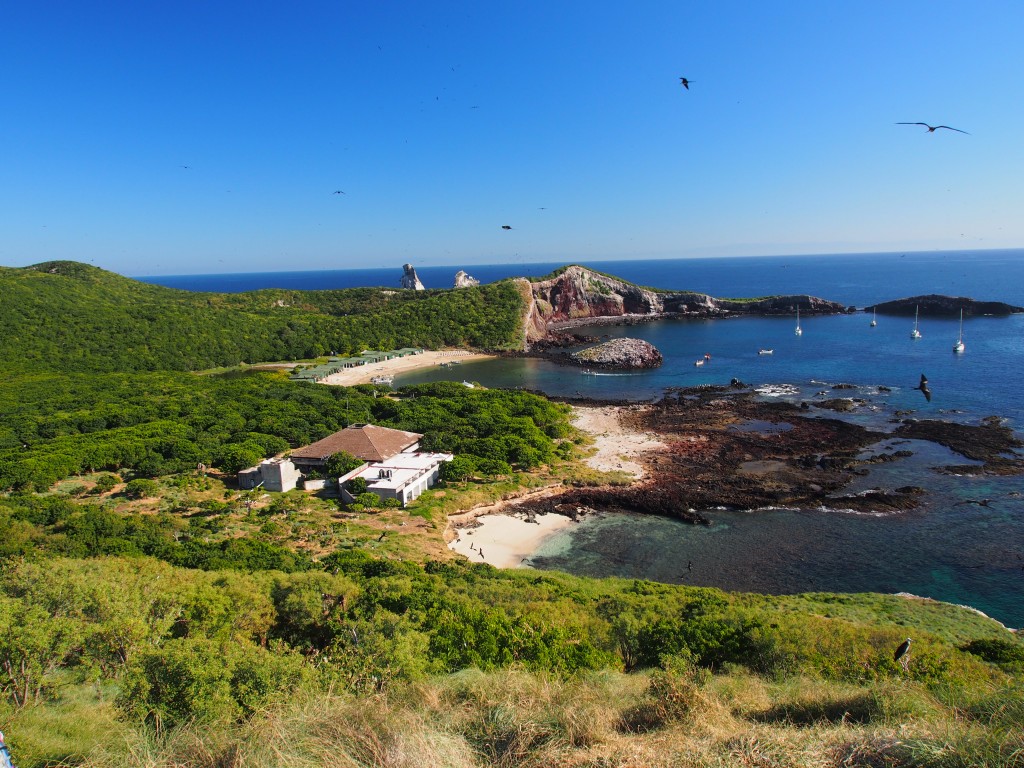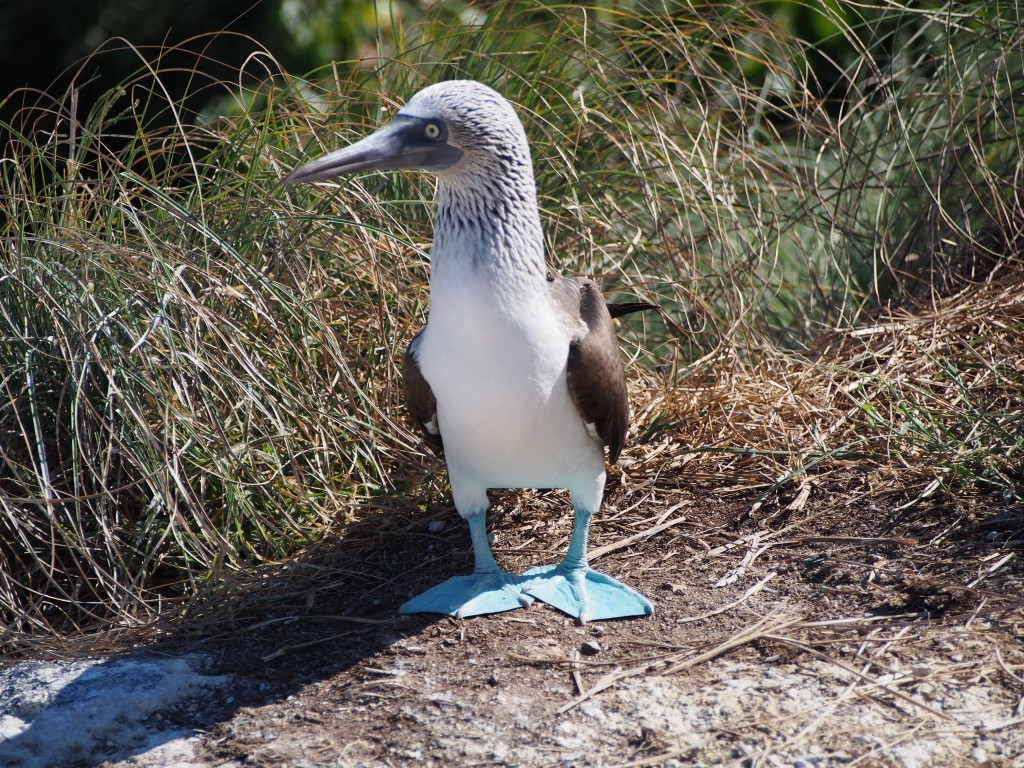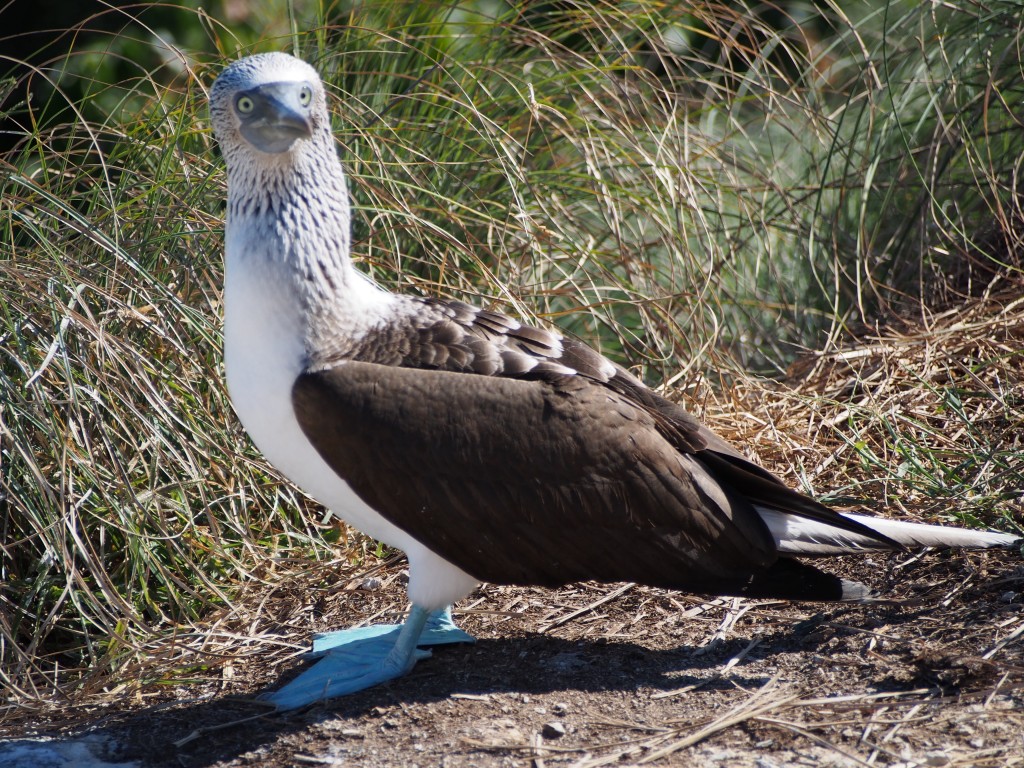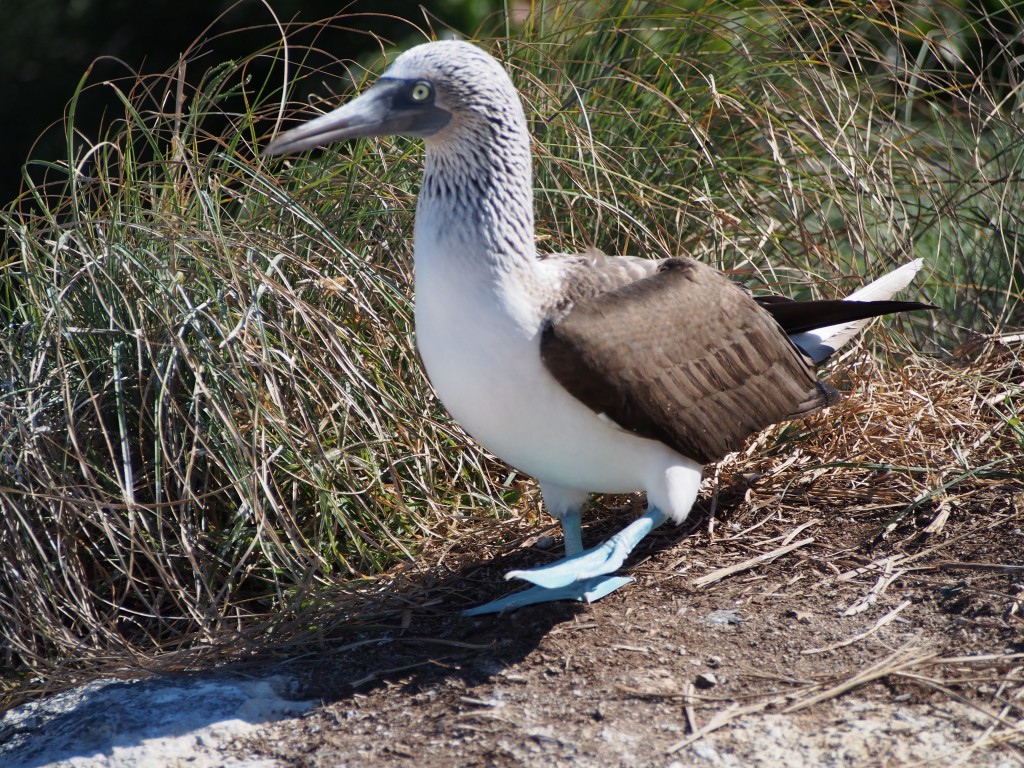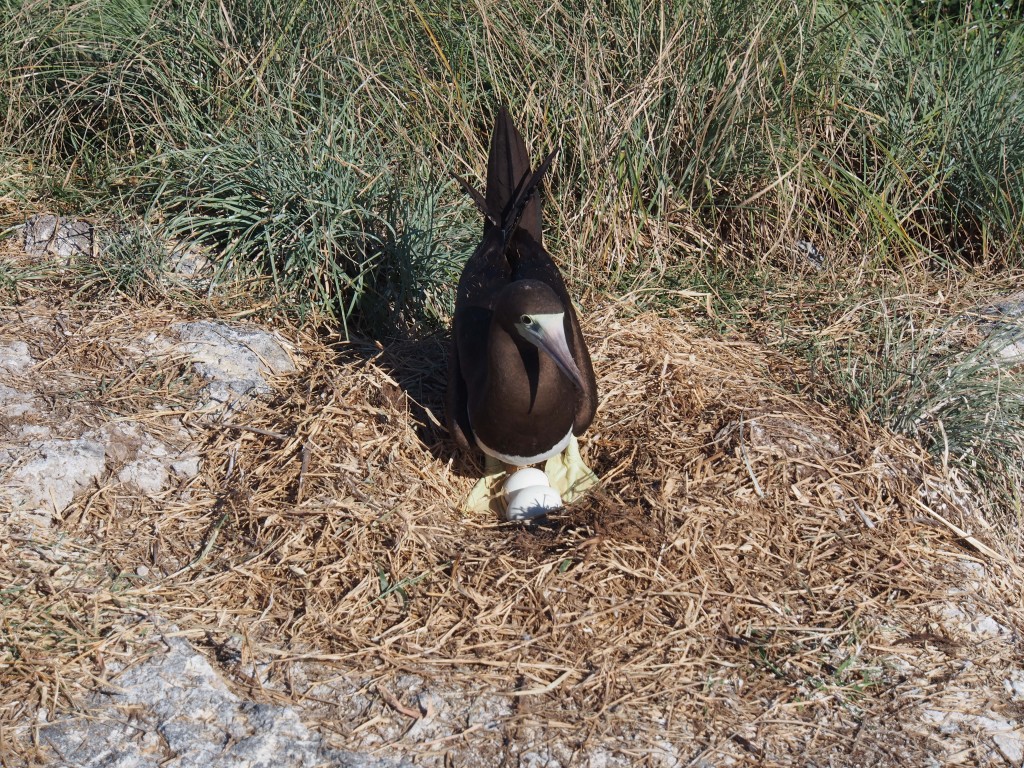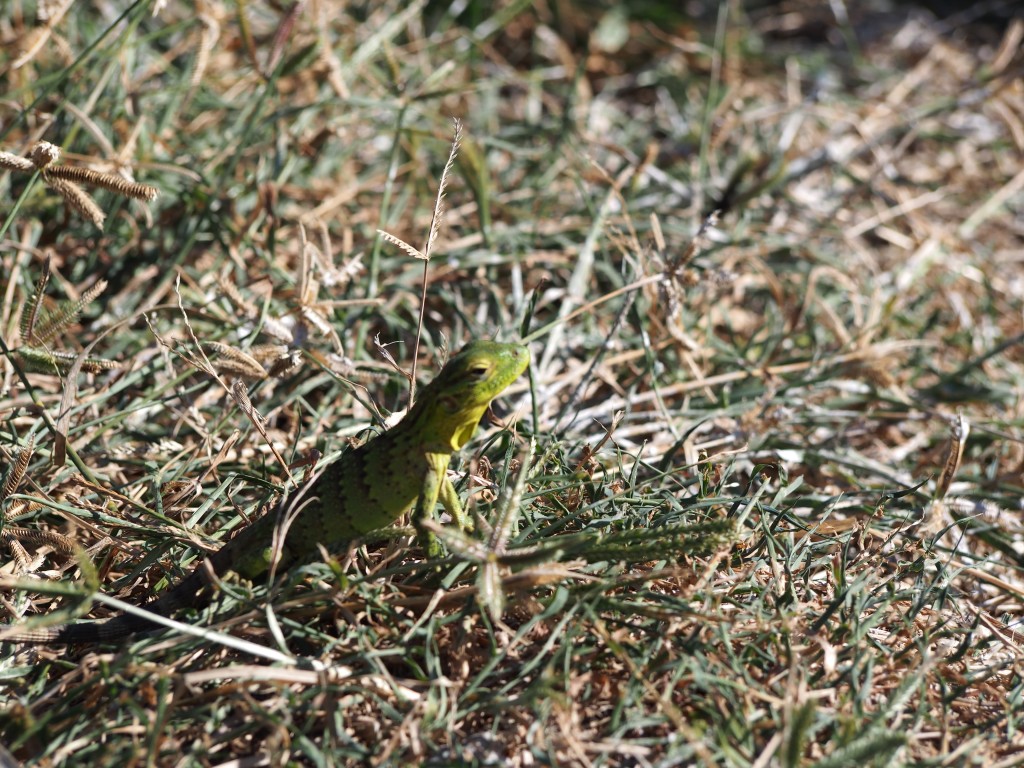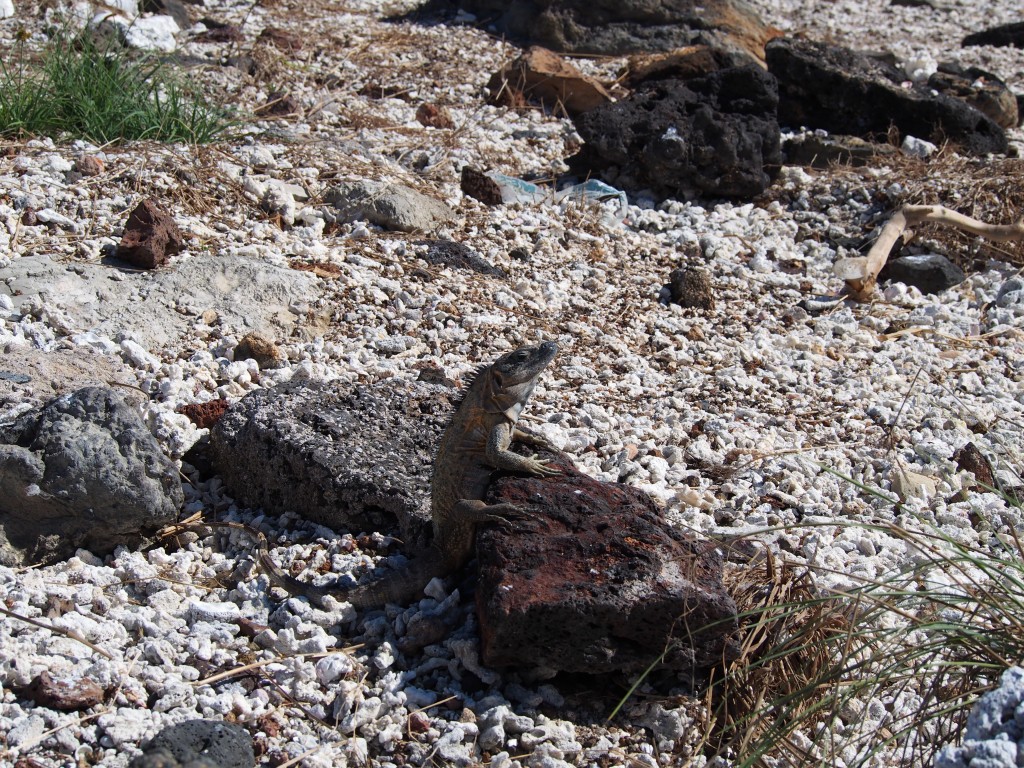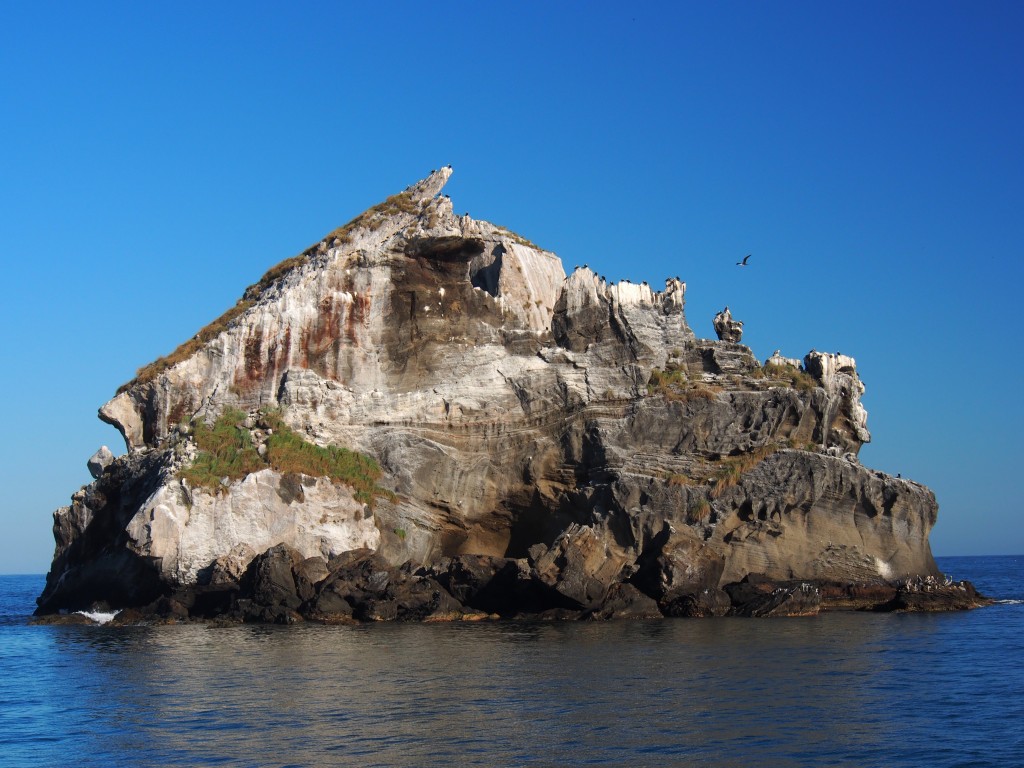A mid-afternoon departure from Mazatlan was timed for a mid-day arrival at Isla Isabel, about 95 miles south. We left at high tide and crossing the bar was very rough with large waves escorting us out of the bay. Winds were blowing 20 knots from the north, and wind waves were steep, so the ride was uncomfortable but fast. We sailed throughout the night with a double-reefed main and partially furled genoa. The winds calmed a few hours from Isla Isabel and we motored the final leg. As we approached the small anchorage on the southern end of the island, we found it full with 6 boats. Our guidebook showed an alternative anchorage on the east side but warned about the rocky bottom and it’s reputation for swallowing anchors. The water was crystal clear so we could see the rocks on the bottom interspersed among the patches of sand. We found a sand patch to drop the anchor on in 20 feet of water and let out 60 feet of chain. We also tied a line onto the anchor crown and floated a buoy on it in case the anchor fouled around a rock. This anchorage is less protected but since the winds had calmed, Apropos did not roll much.
Isla Isabel is an isolated volcanic island 18 miles off the mainland coast and is nicknamed the “Galapagos of Mexico” because of its large number of nesting birds and resident iguanas. Like the Galapagos Islands off Ecuador, Isabel is isolated in the Pacific Ocean and relatively free of natural predators.
By the time we anchored and got the dinghy in the water, the sun was setting and there wasn’t enough time to explore the island, so I dove in the water to inspect the hull. I noticed the prop zinc was gone and small barnacles were covering most of the hull, so I spent about 2 hours scraping with a plastic putty knife. In the morning, we took the dinghy to the southern anchorage and went ashore near the small fishing camp. Along the hike to the light tower at the top of a hill, we walked under the canopy of trees full of nesting frigate birds. The male frigate proudly displays his colors to attract a mate by inflating his bright red throat pouch (gular pouch) and making a whistling sound. Since they can neither swim nor walk well on land, they like to perch in the treetops or on the ground with their wings spread wide open. Along the steep mile-long trail, we spotted iguanas and lizards. The top of the hill was covered with nesting blue footed boobies. They allowed us to approach them to within about 10 feet before flying away, except for the females who were sitting on their eggs. With no predators on the island, these birds seemed curious but unafraid of us. We spent an hour at the peak, then returned to the beach and cooled down in the tide pools along a sandy beach. Before returning to the boat, we bought 3 red snappers from the fishermen for 30 pesos (about $2). We grilled 2 of them and made ceviche with the 3rd. Served with rice, Sriracha sauce, and lime, they made a very tasty meal. We then took the dinghy to the base of a small island rock in front of us and snorkeled among the reef fish. Back at the boat we rinsed off with warm solar showers, got the dinghy back on deck, and departed at 5pm for an overnight sail to La Cruz.
